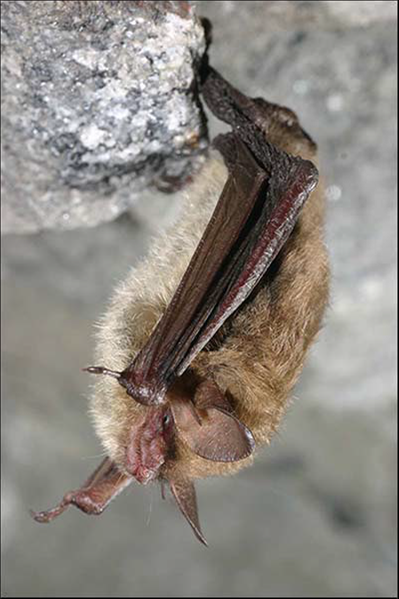The Clean Energy Industry’s Commitment to Bat Conservation
Bats are normally considered just another part of Halloween. But the scariest thing about bats is what the world would look like if they no longer existed. Often misunderstood as a species, bats play a crucial role in a healthy, thriving ecosystem. Bats serve as natural pest control and eat many kinds of insects, including mosquitoes. With over 1,400 species, bats help save farmers billions of dollars a year by eating insects that would harm crops and they also play a vital role in pollinating plants in desert and tropical climates, including 300 species of fruits like mangos and bananas.
Climate change is the top threat to bats in the U.S. according to the State of Bats in North America Report. Each October, Bat Week is celebrated across the globe and raises awareness about the need for bat conservation. The U.S. clean power industry is committed to co-existence with bats when building and maintaining new energy projects and the industry has made positive strides to reduce impact on bats.

Hibernating NLEB. Photo credit: Al Hicks, New York Department of Environmental Conservation (retired).
Wind and solar energy are some of the most environmentally friendly ways of generating electricity. Wind energy has one of the lowest impacts on wildlife and their surrounding habitats of any utility-scale electricity generation. Good stewardship is a core value for the U.S. clean energy industry and the industry is committed to further reducing its already low impact on the environment, including bats.
Clean energy developers take a systematic approach to identifying wildlife impacts and engaging in initiatives to reduce if not eliminate them. The U.S. clean energy industry has a long history of partnering closely with the conservation community and federal and state regulators to solve wildlife challenges.
For nearly three decades, industry leaders have worked collaboratively with conservation partners to develop innovative solutions that support wildlife and the environment. From collaborations with the Department of Energy and NREL, to forming the Renewable Energy Wildlife Institute (REWI) and the Renewable Energy Wildlife Research Fund (REWRF), and The Bats and Wind Energy Cooperative in partnership with conservation and science organizations to implementing technology such as the NRG’s bat deterrent systems, the clean energy industry is committed to coexistence with wildlife.
ACP created the first industry-wide voluntary best management practice for wildlife to reduce bat fatalities at wind power projects through operational adjustments, endorsed by wind power companies operating the majority of wind farms across the U.S. as well as Bat Conservation International and other conservation organizations.
Here are just a few of the many additional ways the clean energy industry is aiding and researching new ways to mitigate bat incidents and ensure thriving ecosystems for our flying mammal friends.
Apex Clean Energy’s Grant Conservation Program
With the company’s core value of sustainability top of mind, Apex Clean Energy strives to not only advance the sustainability of America’s energy system as a whole, but also enhance local ecosystems and habitats where Apex’s projects are developed and operated. That’s why this ACP member company created the Apex Conservation Grant (ACG) program.
Through Apex Clean Energy’s Conservation Grant Program, each renewable energy project commercialized by Apex contributes a sum of money, proportional to the size of the project, to support local or regional wildlife conservation, reforestation and flora restoration, protection of sensitive habitats such as grassland or wetlands, and other environmental conservation initiatives in or near project communities.
In December 2022, Apex Clean Energy awarded a $200,000 conservation grant on behalf of El Sauz and Young Wind to Bat Conservation International (BCI). BCI will work alongside Texas Parks and Wildlife and the Texas Department of Criminal Justice to restore or relocate a colony of nearly one million Mexican free-tailed bats from a critical historic bat roost in an old cotton warehouse in Huntsville, Texas. The grant will allow BCI, the Texas Department of Criminal Justice, and the Texas Parks and Wildlife Department to assess the condition of the existing roost within the warehouse and develop designs to either renovate the structure or construct a new, similar one. Additionally, the grant will be used for bat education, outreach, and research at the site and as a local economic uplift for local businesses, as visitors view the bats’ nightly flight emergences.
Invenergy’s Partnership with New York State Department of Environmental Conservation
At ACP member company Invenergy, a multi-year commitment to protect listed bats from predation at one of the remaining New York hibernacula is underway. Invenergy partnered with the New York State Department of Environmental Conservation (NYSDEC) on a mitigation project to address a risk to the state and federally protected northern long-eared bat. Raccoons were accessing a large cave where bats where hibernating, killing numerous bats each year. The Invenergy project team worked with a wildlife consultant to coordinate the trapping and removal of the raccoons at the cave entrance, which eliminated the problem of predation for not only northern long-eared bats, but also for the other bat species using the cave.
The clean energy industry supports strong collaboration and research to ensure that wind, solar and storage coexists with wildlife. Achieving a sustainable future depends on significantly expanding our nation’s clean energy supply while also protecting and conserving the environment. The work underway to successfully co-exist with bats by ACP member companies and the industry writ-large takes us one step closer toward reaching that goal. There’s nothing spookier than the idea of not taking the steps necessary to ensure a clean energy future for all.
For more information on bats and clean energy, visit REWI’s Bats and Wind Energy webpage and check out REWI’s wind-focused research projects on bats.

